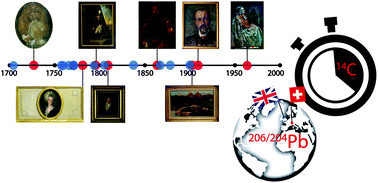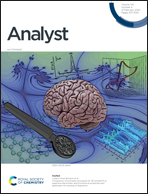Dual isotope system analysis of lead white in artworks†
Abstract
Isotopic studies are gaining much interest in heritage science, as they can provide insight into a material's age and provenance. Radiocarbon (14C) dating affords a time frame for the materials being studied, thus providing a historical context, whereas the specific pattern of lead isotope ratios may be used to set geographical constraints on the source of the original materials. Both methods require invasive sampling from the object, and henceforth limits their respective application. With the focus on lead white paint (2PbCO3·Pb(OH)2), in this study we extract the time of production of the pigment from the carbonate anion by radiocarbon dating while its origin is traced by lead isotope analysis on the cation. The methodology was applied to 12 British and 8 Swiss paintings from the 18th to 20th century, with known dates and provenance. The 14C analysis of the lead white in combination with the organic binder and canvas alone places all objects between the 17th and 20th centuries, which is in agreement with their signed date, wheras the lead isotope analysis of all samples are consistent with lead ores from European deposits. In most of the cases the combined results are consistent with the art historical data and prove that isotope analysis is intrinsic to the object. This feasibility study conducted on paintings of known age demonstrates the possibility to maximize the information output from lead white paint, thus increasing the benefits of a single sampling.



 Please wait while we load your content...
Please wait while we load your content...